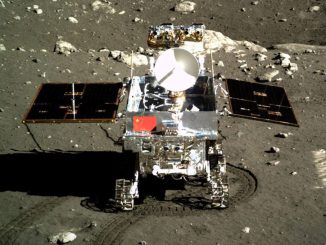
During the 21 January total lunar eclipse, amateur and professional skywatchers on both sides of the Atlantic spotted a small flash near the moon’s darkened limb, the apparent impact of a small meteoroid.
“Something like this probably did not happen since the 12th century when a group of English monks observed together what they described as fire, hot flashes and sparks,” said Pablo Cuartas, co-founder of the Astronomy undergraduate program at the University of Antioquia. “Although on this occasion the impact did not have the energy of the middle-age impact, it was enough for astronomers and enthusiasts of the world to get excited about the event.”
Combining observations from amateur astronomers and observatories in Morocco, the Dominican Republic and Colombia, researchers calculated the impactor likely had a diameter between 10 and 27 centimetres (0.3 and .9 feet) and a mass of 7 to 40 kilograms (15 to 99 pounds).
Hitting the lunar surface at around 47,000 kilometres per hour (28,000 mph), the object likely blasted out a crater some 5 to 10 metres (16 to 33 feet) across. The researchers initially calculated the impactor’s diameter at up to 50 centimetres (1.8 feet), which would have produced the energy equivalent of up to 1.8 tons of TNT. The conclusions were updated after feedback from other observers around the world.
“Social networks and easy access to technology, have brought humanity closer than ever to science,” said Karls Peña, a member of the Dominican Astronomical Society and a co-author of a paper describing the observations.
“Efforts like this, in which professionals and amateurs from different places work together for the advancement of human knowledge, are a very effective way to awaken interest in scientific research in our youngsters.”
The team also used a technique known as gravitational ray tracing, developed by Jorge Zuluaga, an astronomer at the University of Antioquia, and his then-doctoral student Mario Sucerquia, to determine the general direction the impactor came in from and its velocity. While the body was too small to reach definitive conclusions, the team believes the technique will be useful in future observations.



